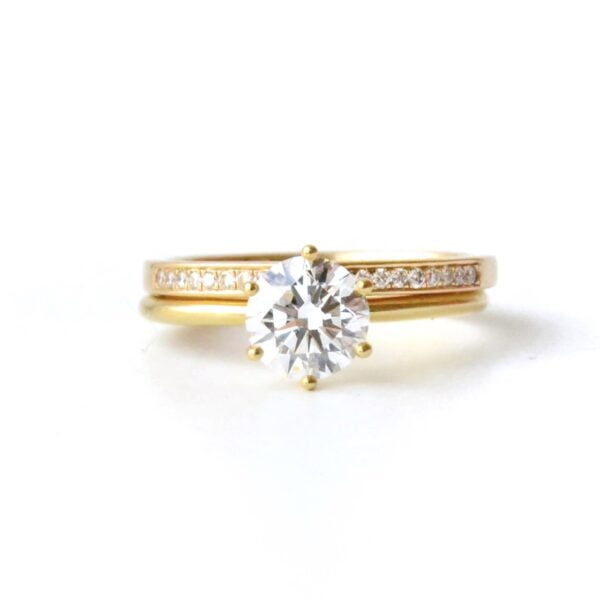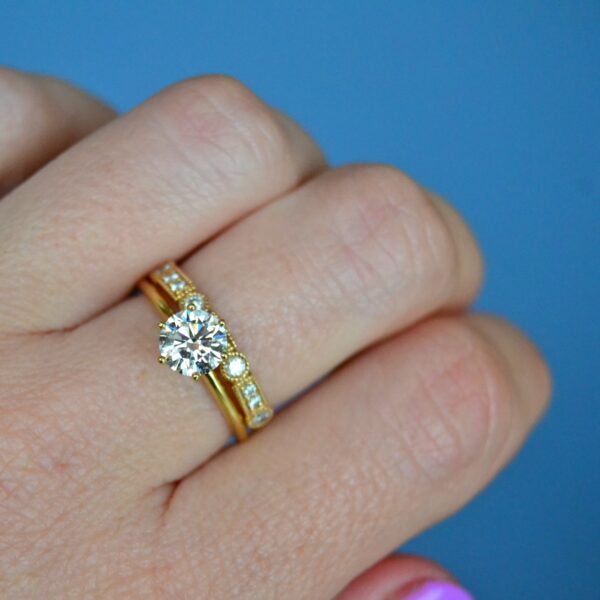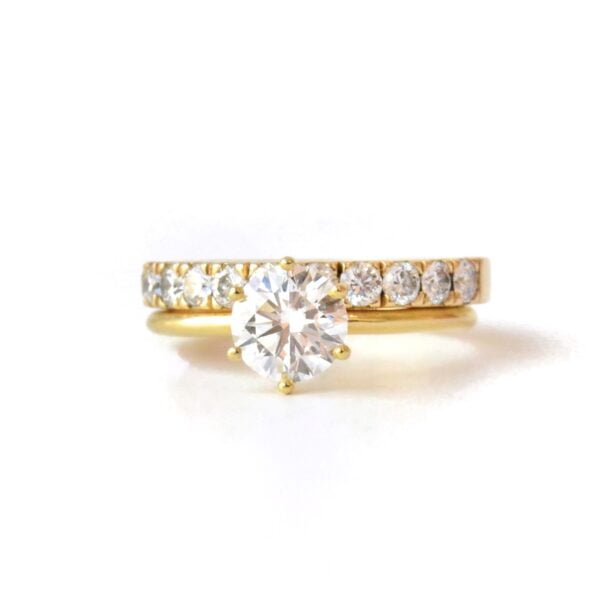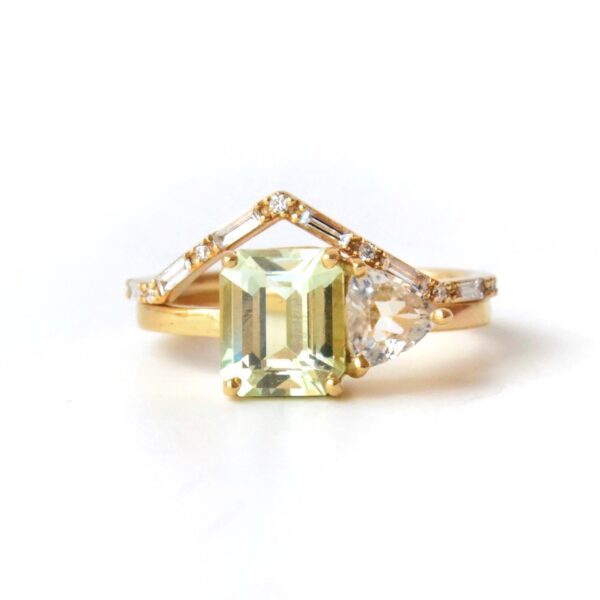No items in the basket.
Natural vs. Lab Grown Diamonds
At Anpé Atelier, we have a nuanced approach to lab-grown diamonds. While they don’t currently feature in our ready-made collections, we’re open to incorporating them into our clients’ custom designs.
At the heart of our brand lies a passion for one-of-a-kind gemstones, each possessing their own magical stories. We embrace their uniqueness – such as their vibrant tones, unique shapes and intriguing origins, and celebrate their centuries-old journey from deep within the earth.
While we prioritize natural diamonds for our ready-made pieces, we remain open to utilizing lab-grown diamonds in our custom designs. We recognize their identical composition and characteristics, yet acknowledge the absence of the enchanting narrative that accompanies natural diamonds.

With every industry, there are pros and cons. Here are some key points for both natural and lab grown diamonds.
Lab grown diamonds
Pros:
- Lab-grown diamonds can be produced with fewer impurities and inclusions, allowing for better quality control.
- They tend to be more affordable than natural diamonds.
- They generally have a lower environmental impact compared to traditional mining.
- They have an identical composition to natural diamonds and are equally durable and hard.
Cons:
- They don’t hold their value in the same way as natural diamonds do.
- The production of lab-grown diamonds requires a significant amount of energy and many of the labs creating the diamonds are run on coal.
- Lab-grown diamonds lack the rarity and uniqueness associated with natural diamonds.
- Takes business away from mining communities that are dependent on the diamond industry.
- Lack of regulations (universal standards in terms of certifications, ethics etc) to ensure quality and transparency.
Natural Diamonds
Pros:
- Formed deep within the earth over billions of years, making them unique and rare.
- They maintain a strong market value over time.
- The diamond industry upholds entire communities in developing countries, giving communities access to jobs and steady incomes.
- Highly regulated. Kimberley Process and World Diamond Council work to certify that diamonds are conflict free and ensure ethical business practices. The System of Warranties requires industry members to disclose information about the source of their diamonds and commit to ethical practices. The Responsible Jewellery Council provides certification standards covering environmental and social responsibility aspects of the diamond supply chain.
- The UN estimates that 99.8% of diamonds on the market now are conflict free.
- Companies are beginning to offer provenance certificates to show the entire supply chain.
Cons:
- High cost (limits accessibility to some consumers)
- Traditional diamond mining can have significant environmental consequences, including habitat disruption, soil erosion, and water pollution.
Currently, we source all diamonds above .20ct from our supplier, Botswanamark. They provide each diamond with a traceability certificate that outlines the entire journey that specific stone has been through, from mine to procurement to polisher. When we know the source of our stones, we are able to make sure that they are ethical.
At our core, we prioritize bespoke experiences, ensuring that each gemstone, whether natural or lab-grown, aligns with our clients’ personal stories and values.
If you are looking to create a custom design with a natural or lab-grown diamond, don’t hesitate to reach out. You can send us an email at [email protected] or book a virtual or in-person design meeting.
New in
Our newest colorful collection palette.
Scroll for more products








